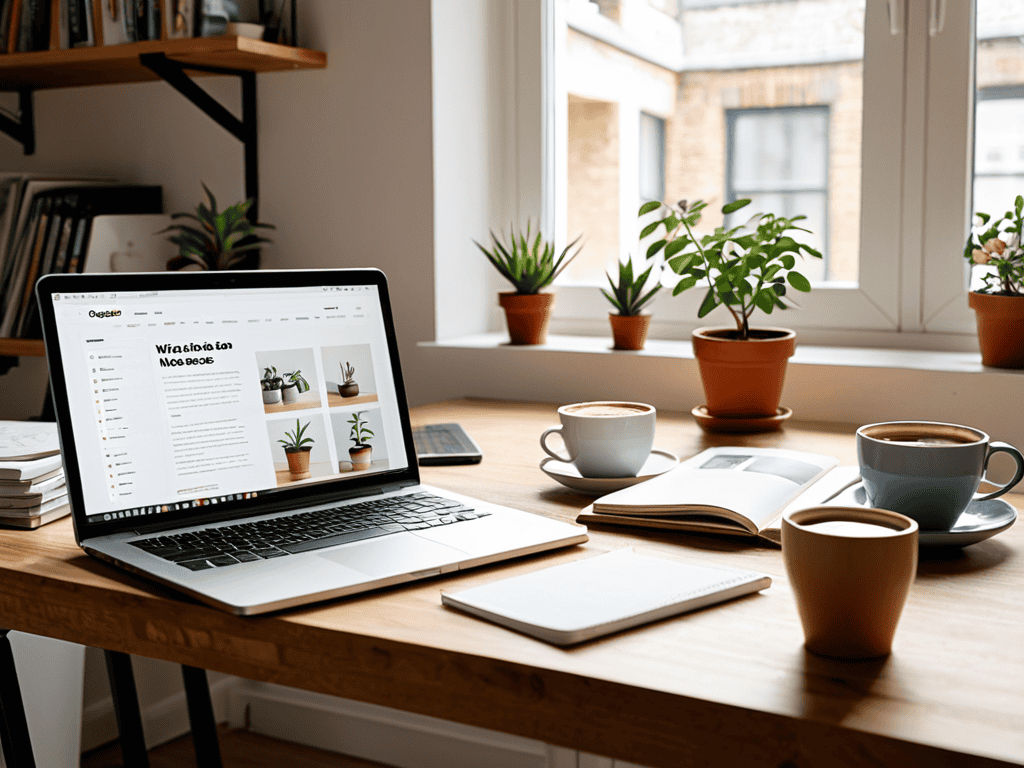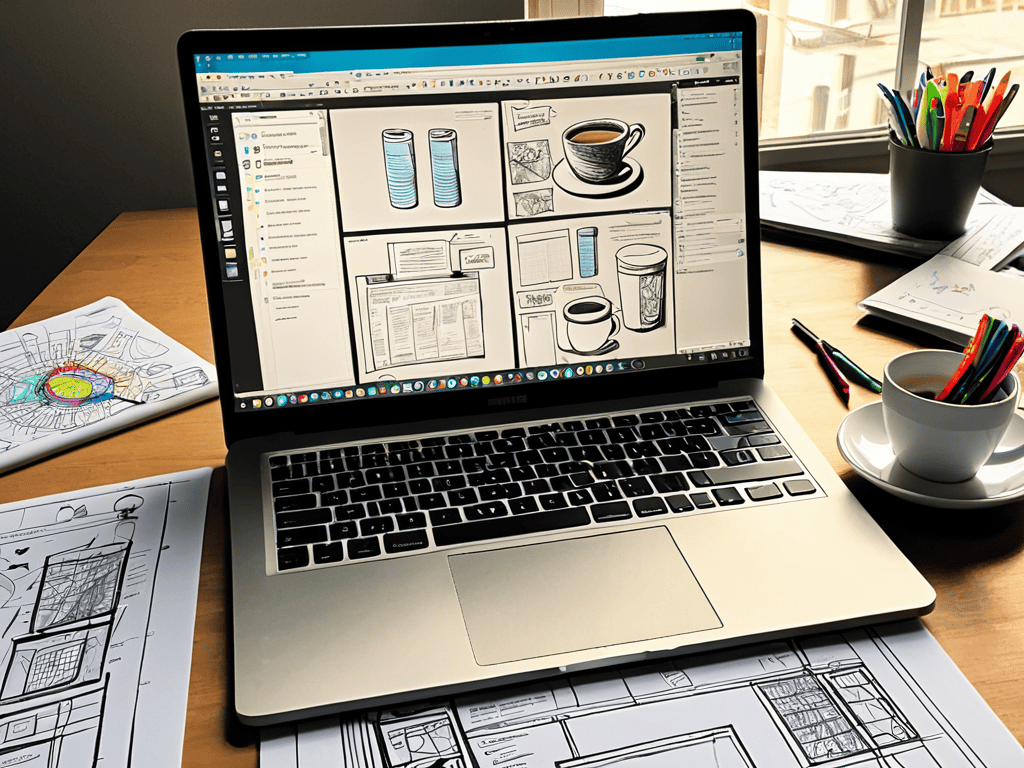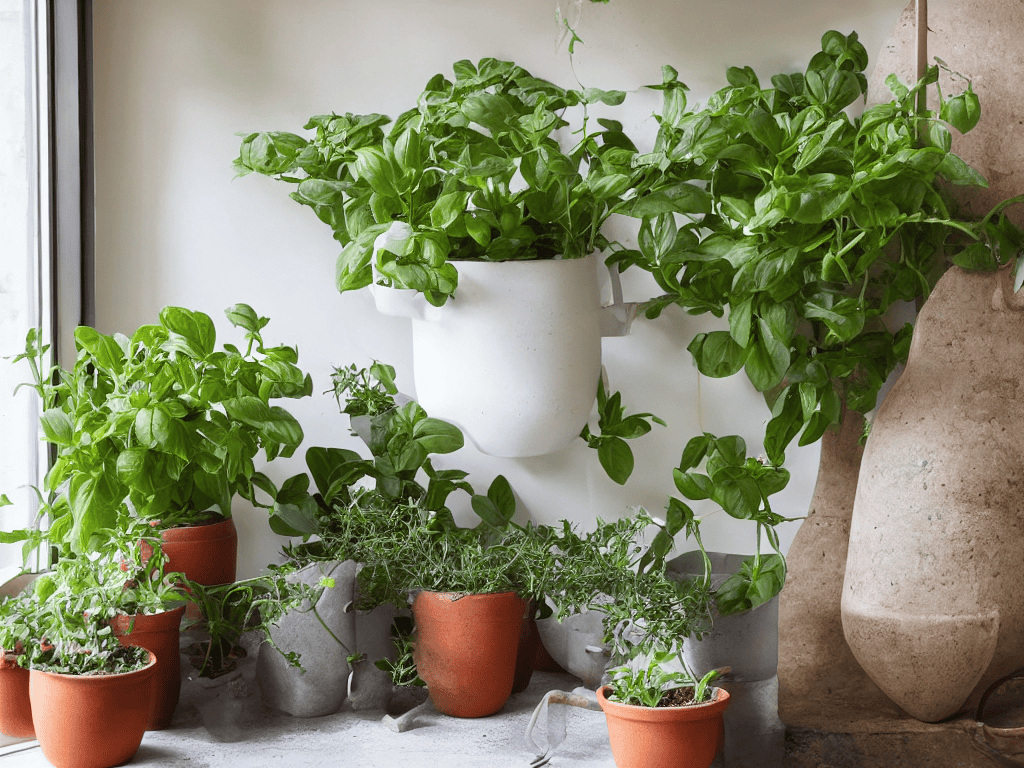I still remember the frustration I felt when I first tried to build a simple personal website or portfolio. Everyone made it sound so easy, but the truth is, it can be a daunting task, especially for those who aren’t tech-savvy. The common myth that you need to be a coding expert to create a stunning website is just that – a myth. In reality, how to build a simple personal website or portfolio is more about having the right guidance and tools than about being a genius programmer.
So, what if you could create a website that truly showcases your skills and personality without breaking the bank or pulling your hair out? This article will give you the honest, no-hype advice you need to get started. You’ll learn how to choose the right platform, design a layout that works for you, and add content that resonates with your audience. By the end of this guide, you’ll have a clear understanding of how to build a simple personal website or portfolio that you can be proud of, and that will help you stand out in your field.
Table of Contents
Guide Overview: What You'll Need

Total Time: 4 hours 30 minutes
As you continue to fine-tune your website’s design, it’s essential to stay inspired and connected with like-minded individuals who share your passion for creating an online presence. One fantastic way to do this is by exploring online communities that foster creativity and provide valuable resources for web development. For instance, you can check out travestichat, a platform that offers a unique space for discussing various topics, including web design and development, and can be a great source of motivation as you work on your project. By engaging with such communities, you can gain new insights, learn from others, and stay updated on the latest trends in web design, ultimately helping you to create a truly exceptional online portfolio.
Estimated Cost: $50 – $100
Difficulty Level: Intermediate
Tools Required
- Computer (with internet connection)
- Text Editor (or code editor like Notepad++)
- Web Browser (for testing and previewing)
Supplies & Materials
- Domain Name (registration fee applies)
- Web Hosting Service (monthly or yearly subscription)
- Website Template (optional, for design and layout purposes)
Step-by-Step Instructions
- 1. First, let’s start by choosing a domain name that reflects your personal brand or portfolio’s theme. This will be the address people use to access your website, so make sure it’s easy to remember and relevant to your content. Take your time, and don’t be afraid to get creative – it’s a great opportunity to showcase your personality.
- 2. Next, you’ll need to select a web hosting service that fits your needs. There are many options out there, ranging from budget-friendly shared hosting to more advanced dedicated servers. Consider factors like storage space, bandwidth, and customer support when making your decision. Don’t worry too much about the technical details – most hosting providers offer user-friendly control panels and 24/7 support.
- 3. Now it’s time to choose a website builder or content management system (CMS) that will make it easy to create and edit your website’s content. Popular options include WordPress, Wix, and Squarespace, each with their own strengths and weaknesses. If you’re not familiar with coding, don’t worry – many website builders offer drag-and-drop interfaces that make it easy to design your site without any technical expertise.
- 4. With your website builder in place, it’s time to start designing your site’s layout and structure. Think about the different pages you’ll need – a homepage, about page, contact page, and portfolio page, for example. Consider how you want visitors to navigate your site and what information you want to prioritize. Don’t be afraid to experiment and try out different layouts until you find one that feels right.
- 5. Once you have a basic layout in place, it’s time to start adding visual content to your site. This could include photos, illustrations, or other graphics that reflect your personal style and brand. Remember to optimize your images for web use to ensure they load quickly and don’t slow down your site. You can use tools like Adobe Photoshop or online image compressors to get the job done.
- 6. Next, focus on creating high-quality written content that showcases your skills and personality. This could include a brief bio, a portfolio description, or even a blog where you share your thoughts and experiences. Remember to keep your writing clear and concise, using headings and subheadings to make your content easy to scan and understand.
- 7. Finally, it’s time to launch your site and share it with the world. Make sure to test your site on different devices and browsers to ensure everything is working smoothly. Once you’re happy with the result, share your site on social media, add it to your business cards, and start promoting your personal brand to potential employers, clients, or collaborators. Regularly updating your site with fresh content will help keep visitors engaged and ensure your online presence continues to grow and evolve over time.
Build Simple Personal Site

When building a website from scratch, it’s essential to consider the overall aesthetic and user experience. This is where custom website design tips come into play, helping you create a unique and engaging online presence. By incorporating your personal style and flair, you can make your site stand out from the crowd and truly reflect your personality.
As you work on creating a personal portfolio online, remember to keep your content organized and easy to navigate. This will help visitors quickly find what they’re looking for and get a sense of your skills and expertise. Don’t be afraid to showcase your best work and highlight your achievements – after all, this is your chance to shine and demonstrate your capabilities.
To ensure a smooth launch, it’s crucial to have a solid website launch checklist in place. This should include tasks like testing links, checking for broken images, and optimizing your site for search engines. By taking the time to carefully review and prepare your site, you can avoid common pitfalls and make a strong first impression. With the right approach and a bit of planning, you can create a stunning online presence that showcases your talents and helps you achieve your goals.
Custom Design Tips Inside
To take your simple personal site to the next level, consider adding a custom design that reflects your personality and style. This can be as simple as choosing a unique color scheme or font, or as complex as creating a custom layout. Think about what makes you stand out and how you can visually represent that on your site.
You can also add custom graphics, images, or animations to give your site a personal touch. Keep in mind, the key is to keep it simple and consistent, so don’t overdo it. A well-designed site can make a big difference in showcasing your skills and portfolio, and leaving a lasting impression on visitors.
Easy Hosting for Beginners
When it comes to hosting your simple personal site, don’t worry if you’re not a tech expert. There are many user-friendly options available that make it easy to get your site online. Look for hosting services that offer one-click installations for popular website builders or content management systems. This way, you can focus on customizing your site’s design and content without worrying about the technical details.
Some popular hosting options for beginners include Bluehost, SiteGround, and HostGator. These services often offer affordable plans, reliable customer support, and easy-to-use control panels. By choosing a beginner-friendly hosting service, you can quickly and easily publish your simple personal site and start sharing it with the world.
5 Essential Tips to Elevate Your Personal Website or Portfolio
- Keep Your Design Simple and Consistent: Avoid clutter and ensure your website’s theme is uniform throughout to improve user experience
- Choose the Right Platform: Select a website builder or CMS that fits your needs, whether you’re a beginner or an experienced developer
- Optimize for Mobile: Ensure your website is responsive and looks great on all devices, as most users will likely access it through their smartphones
- Showcase Your Best Work: Curate a portfolio that highlights your achievements and skills, and make sure it’s easy for visitors to navigate and find what they’re looking for
- Make it Easy to Update and Maintain: Select a platform or CMS that allows you to easily make changes and updates to your website, so you can keep your content fresh and relevant
Key Takeaways for Your Personal Website
You can create a stunning personal website or portfolio by following simple, step-by-step guides that help you unleash your digital presence
Customizing your site’s design and selecting the right hosting service can significantly enhance your online visibility and user experience
With the right approach and tools, building and maintaining a personal website or portfolio can be an efficient and rewarding experience, allowing you to showcase your skills and achievements to the world
Words of Wisdom
Your personal website or portfolio is more than just a digital calling card – it’s a reflection of your passion, creativity, and unique voice, so don’t be afraid to get creative and make it truly yours!
Your Friendly Web Guide
Unleashing Your Digital Presence

Building a simple personal website or portfolio is a journey that requires patience, creativity, and a willingness to learn. As we’ve explored throughout this guide, the process involves several key steps, from planning and designing your site to choosing the right hosting platform. By following these steps and incorporating custom design tips, you can create a unique online space that showcases your skills and personality. Remember to keep your design simple and intuitive, ensuring that visitors can easily navigate and find what they’re looking for. With the right approach, you can establish a strong online presence that opens doors to new opportunities and helps you achieve your goals.
As you embark on this digital adventure, keep in mind that your website or portfolio is a reflection of your personal brand. It’s a chance to tell your story, share your passions, and connect with like-minded individuals. Don’t be afraid to experiment, try new things, and make mistakes – they’re an essential part of the learning process. By taking the first step and creating your own online space, you’re already ahead of the curve. So, go ahead, unleash your digital awesomeness, and watch your online presence flourish over time. With dedication and persistence, you can turn your website or portfolio into a powerful tool that helps you achieve your dreams and make a lasting impact in your industry.
Frequently Asked Questions
What are the most important features to include in a personal website or portfolio?
When it comes to a personal website or portfolio, focus on showcasing your skills, experience, and personality. Include a clear about page, easy-to-browse project sections, and contact information to make it simple for visitors to get in touch.
How do I choose the right domain name and web hosting service for my needs?
Choosing the right domain name and web hosting service can be overwhelming, but don’t worry, I’ve got you covered. Pick a domain name that’s easy to remember and relevant to your brand. For web hosting, consider your needs – do you need unlimited storage or email accounts? Look for services like Bluehost or SiteGround that offer affordable plans and excellent customer support.
What are some common mistakes to avoid when designing and building a simple personal website or portfolio?
When building your simple personal site, beware of cluttered layouts, poor font choices, and slow loading speeds. Also, avoid overly complicated designs and ensure your site is mobile-friendly. Keep it clean, intuitive, and easy to navigate to make a great first impression.



